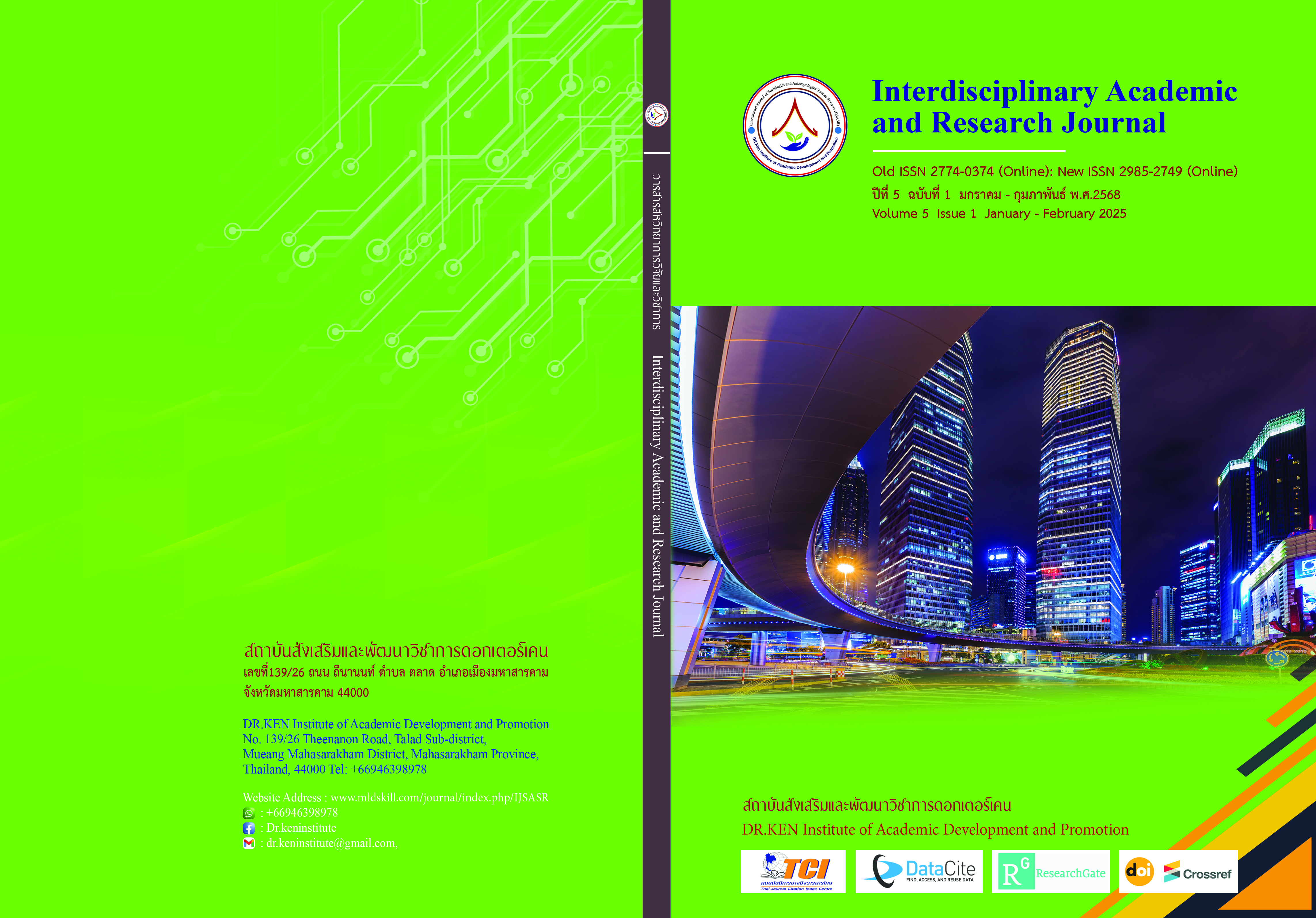Communication Strategy Used by the Football Commentators in thePrincessCup, Rasi Salai District, Sisaket Province
DOI:
https://doi.org/10.60027/iarj.2025.280870Keywords:
Communication strategy, Football commentator, Attitude, Football fansAbstract
Background and Aims: Football commentators use communication strategies to keep viewers interested, making the game more exciting and accessible. These strategies help to convey the match's emotion, pace, and context, which improves the overall viewing experience. Thus, the research aimed to study the communication strategy used by football commentators in the Princess Cup, Rasi Salai District, Sisaket province, and investigate the attitude of football fans towards the commentators.
Methodology: This qualitative research sample group was five football commentators and 100 football fans, selected using purposive sampling. The research tool was an in-depth interview. The researcher interviewed the sample group to collect data.
Results: Football commentators used various communication strategies to describe the game, including strategies involving sensitive rhetoric tailored to the interlocutor, message creation strategies, conformity strategies, and strategies for social politeness. Moreover, the results revealed the fans' attitudes toward the football commentators, showing their affection for the Princess Cup in Rasi Salai District, Srisaket Province, due to their pride in their hometown team. In addition, they enjoyed the game because of the live commentary on the field and gained valuable information through the commentators' communication strategies.
Conclusion: The use of communication strategies by the football commentators in the Princess Cup, Rasi Salai District, Srisaket Province, built enjoyment among the fans and pride in the football players, as well as their hometown team. Most fans would like to see the development of a new generation of commentators, particularly local commentators, who can adopt these communication strategies for dubbing in the following years to maintain this tournament and establish it as the identity of Rasi Salai District, Srisaket Province.
References
กมลสิงห์ นิลศรี, เครือวัลย์ ชัชกุล และณัฐวุฒิ บุญศรี. (2562). ปัจจัยที่มีอิทธิพลต่อการเข้าชมการแข่งขันฟุตบอลอาชีพในประเทศไทย กรณีศึกษาสโมสรฟุตบอลบุรีรัมย์ ยูไนเต็ด. ใน รายงานการประชุมวิชาการด้านมนุษยศาสตร์และสังคมศาสตร์ระดับชาติ ครั้งที่ 2 “มนุษยศาสตร์และสังคมศาสตร์นวัตกรรมสร้างสรรค์สังคม”. (ไม่ปรากฏเลขหน้า).มหาวิทยาลัยราชภัฏสงขลา.
การกีฬาแห่งประเทศไทย. (2553). วิทยาศาสตร์การกีฬาฟุตบอล. ศูนย์วิทยาศาสตร์การกีฬาการกีฬาแห่งประเทศไทย.
จิราภรณ์ สุวรรณวาจกกสิกิจ. (2556). ผู้ประกาศในกิจการกระจายเสียงและกิจการโทรทัศน์ระดับกลาง. ส เจริญ การพิมพ์จากัด.
ณัฐพงศ์ วณิชชัยกิจ. (2556). After effects cs6 essential. ไอดีซี พรีเมียร์.
เตชิต อภินัท์ธรรม. (2560). ปัจจัยที่มีผลต่อความพึงพอใจในการเชียร์สโมสรฟุตบอลบุรีรัมย์ ยูไนเต็ด ของแฟนบอลคนไทย. วิทยานิพนธ์บริหารธุรกิจมหาบัณฑิต: มหาวิทยาลัยธรรมศาสตร์.
ประทุม ฤกษ์กลาง. (2552). ยุทธศาสตร์การวางแผนการประชาสัมพันธ์. แผนกตำราและคำสอนมหาวิทยาลัยกรุงเทพ.
มาลินี มาลีคล้าย. (2554). การรับรู้การสื่อสารการตลาดของผู้บริโภคที่มีผลภาพลักษณ์ ตราสินค้าอิชิตันในเขตกรุงเทพมหานคร. วิทยานิพนธ์การบริหารธุรกิจมหาบัณฑิต, มหาวิทยาลัยเทคโนโลยีราชมงคลธัญบุรี.
ศิริวรรณ เสรีรัตน์ และคณะ. (2550). การบริหารการตลาดยุคใหม่. บริษัท ธรรมสารจำกัด.
อรวรรณ ปิลันธน์โอวาท. (2554). การสื่อสารเพื่อการโน้มน้าวใจ. พิมพ์ครั้งที่ 4. สำนักพิมพ์แห่งจุฬาลงกรณ์มหาวิทยาลัย.
Hyde, S.W. (1995). Television & Radio Announcing. 7th edition. USA Houghton.
Ministry of Tourism and Sports. (2017). National Sports Development Plan(Vol.6) B.E.2560- 2564, The Office of the Permanent Secretary to the Ministry of Tourism and Sports. WarVeterans Organization Printing Mill.
Downloads
Published
How to Cite
Issue
Section
License
Copyright (c) 2025 Interdisciplinary Academic and Research Journal

This work is licensed under a Creative Commons Attribution-NonCommercial-NoDerivatives 4.0 International License.
Copyright on any article in the Interdisciplinary Academic and Research Journal is retained by the author(s) under the under the Creative Commons Attribution-NonCommercial-NoDerivatives 4.0 International License. Permission to use text, content, images, etc. of publication. Any user to read, download, copy, distribute, print, search, or link to the full texts of articles, crawl them for indexing, pass them as data to software, or use them for any other lawful purpose. But do not use it for commercial use or with the intent to benefit any business.
















.png)


